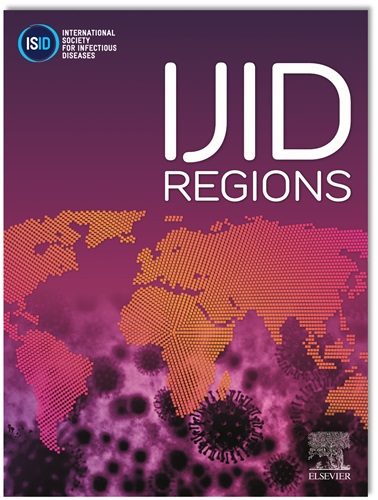Estimation of the number of people affected by post COVID-19 condition in Switzerland in 2023: a mathematical model
IF 4.8
2区 医学
Q1 INFECTIOUS DISEASES
引用次数: 0
Abstract
Objectives
We aimed to estimate the prevalence and incidence of post COVID-19 condition (presence of symptoms related to a SARS-CoV-2 infection at least 3 months earlier) in Switzerland in 2023 using mathematical modeling.
Methods
We constructed a deterministic compartmental model of SARS-CoV-2 transmission, extended with a module to calculate incidence and prevalence of post COVID-19 condition stratified by symptom cluster (fatigue, neuropsychiatric, and cardiopulmonary). We explored different scenarios to account for the uncertainty in model parameters and reported the mean value with a full range of results.
Results
From October to December 2023, the model projected 61,300 (range across scenarios: 7900-195,000) new cases of post COVID-19 in Switzerland. The number of individuals with prevalent post COVID-19 remained stable during the year, decreasing minimally from 386,900 (87,500-930,600) in June to 380,800 (62,100-990,800) in December 2023. Neuropsychiatric disorders were the most common symptoms. About half of the individuals with post COVID-19 condition at the end of 2023 had been affected by the symptoms by more than 6 months.
Conclusions
At least 1% of the Swiss population is affected by the long-term consequences of COVID-19, and this proportion is likely to be multiple times higher. The prevalence is expected to remain at a high level also in the future.
估计2023年瑞士受COVID-19后状况影响的人数:数学模型
目的:我们旨在使用数学模型估计2023年瑞士COVID-19后病情(至少3个月前出现与SARS-CoV-2感染相关的症状)的患病率和发病率。方法:构建了SARS-CoV-2传播的确定性区室模型,并扩展了按症状聚类(疲劳、神经精神、心肺)分层计算COVID-19后病情发病率和流行率的模块。我们探索了不同的情景,以解释模型参数的不确定性,并报告了具有全范围结果的平均值。结果:在2023年10月至12月期间,该模型预测瑞士新发COVID-19病例61,300例(各情景范围:7900-195,000例)。2019冠状病毒病后流行病例全年保持稳定,从6月的38.69万人(87500 - 93.06万人)小幅下降至2023年12月的38.08万人(62100 - 99.08万人)。神经精神障碍是最常见的症状。到2023年底,约有一半的COVID-19后患者受症状影响超过6个月。结论:至少有1%的瑞士人口受到COVID-19长期后果的影响,这一比例可能高出数倍。预计今后的流行率也将保持在较高水平。
本文章由计算机程序翻译,如有差异,请以英文原文为准。
求助全文
约1分钟内获得全文
求助全文
来源期刊
CiteScore
18.90
自引率
2.40%
发文量
1020
审稿时长
30 days
期刊介绍:
International Journal of Infectious Diseases (IJID)
Publisher: International Society for Infectious Diseases
Publication Frequency: Monthly
Type: Peer-reviewed, Open Access
Scope:
Publishes original clinical and laboratory-based research.
Reports clinical trials, reviews, and some case reports.
Focuses on epidemiology, clinical diagnosis, treatment, and control of infectious diseases.
Emphasizes diseases common in under-resourced countries.

 求助内容:
求助内容: 应助结果提醒方式:
应助结果提醒方式:


